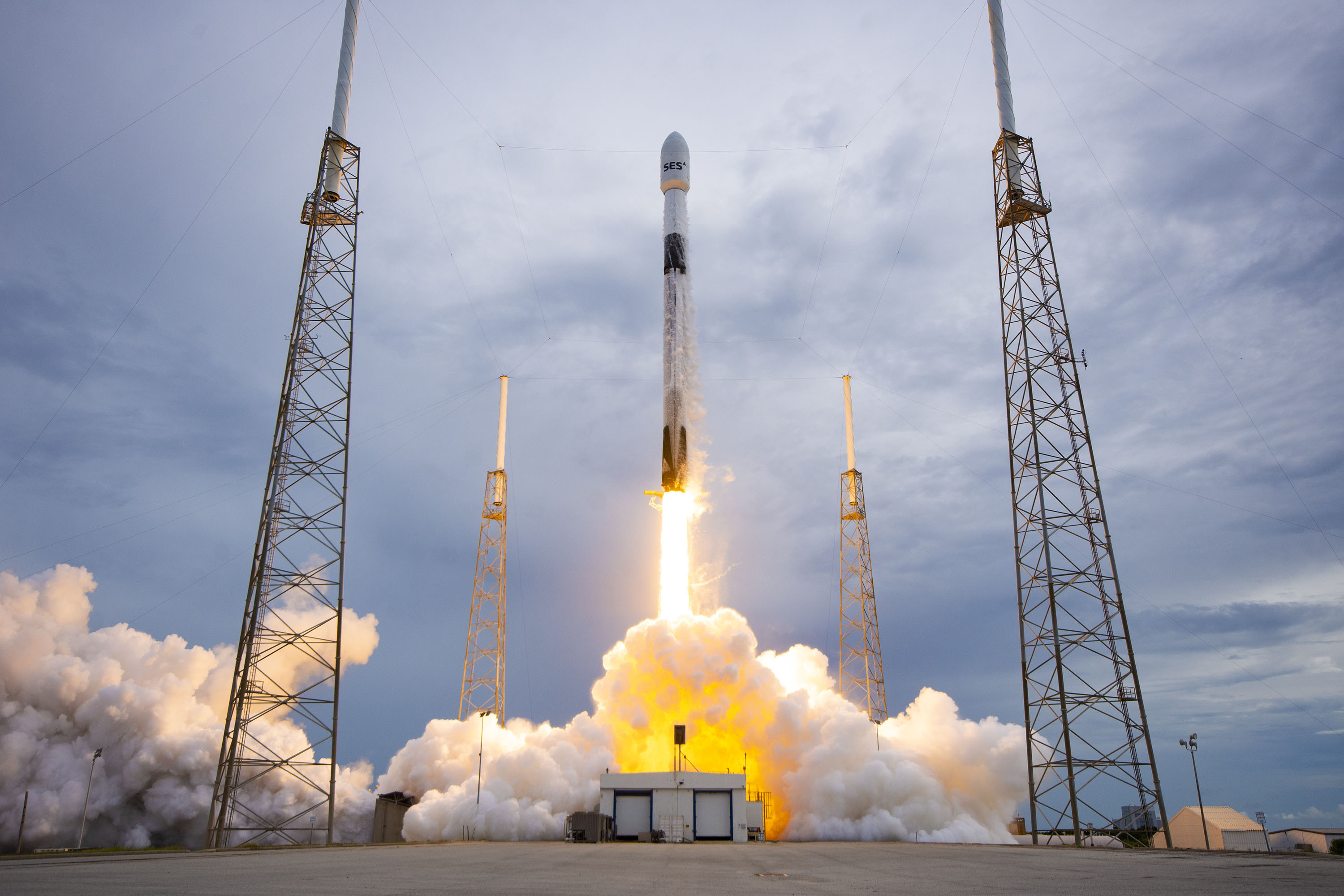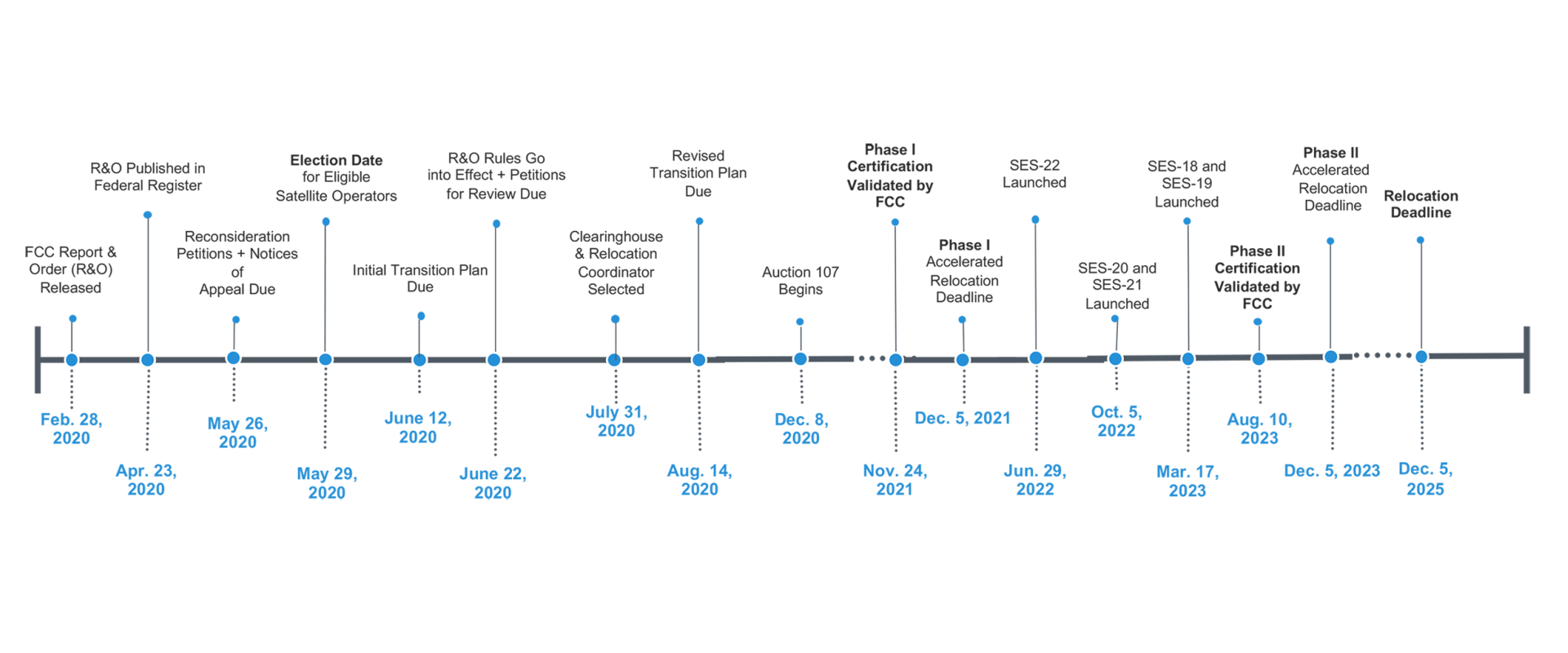
The C-Band Transition Plan in the US
SES Successfully Cleared C-Band for 5G
Several years ago, the U.S. Federal Communications Commission (FCC) carefully developed a plan to clear 280 MHz of C-band spectrum (plus a 20-MHz guard band) for 5G mobile services in the contiguous United States (CONUS) as early as December 2023, with a portion of that spectrum becoming available as early as December 2021.Previously, the full 500 MHz of the C-band was being used by satellite operators serving U.S. broadcasters and programmers to provide TV and radio to nearly 120 million American homes, as well as other critical data transmission services.
The FCC’s balanced approach ensured that C-band spectrum became available quickly without disrupting critical video and audio services.
SES was proud to help put America to work by procuring from businesses across the U.S. the services and equipment needed for the C-band transition.
Delivering on the clearing milestones set out in the FCC’s Report & Order, SES has filtered tens of thousands of earth station antennas throughout the United States to prevent interference from new 5G services. SES launched five new satellites to provide the necessary capacity to maintain services for our existing customers.
- SES-22 was launched on June 29, 2022. It started service in August 2022.
- SES-20 and SES-21 were launched on October 4, 2022. SES-21 started service in November 2022, with SES-20 as an operational spare, if needed.
- SES-18 and SES-19 were launched on March 17, 2023. SES-18 started service in June 2023.
As of August 10, 2023, the FCC has validated SES’s Phase II certification, acknowledging the full completion of all necessary activities within our role in the C-band transition.

C-Band Clearing Timeline

How can we help?
C-Band Help Desk Line: 609-987-4400



